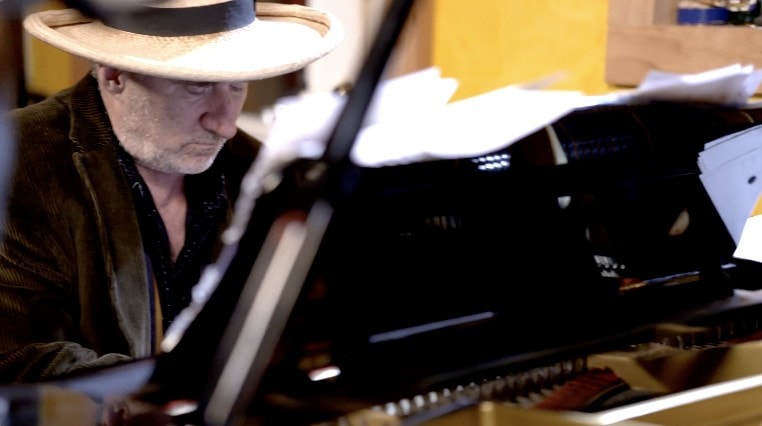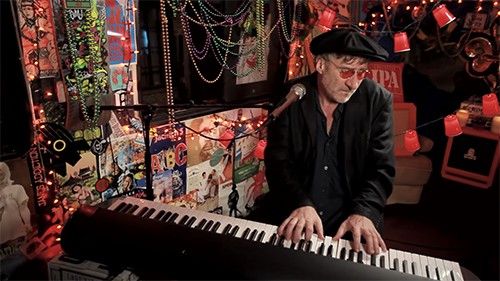
Hayden Hill
Hayden founded PianoGroove in 2015 with the goal of making the world a more musical place. He shares his love for jazz piano through his online courses and manages the community area of PianoGroove.
Seminar Description
Seminar Description
Drown In My Own Tears – Slow Blues Breakdown
Welcome to this lesson where we explore the harmony and stylistic elements of the slow blues tune "Drown In My Own Tears." This lesson is perfect for pianists looking to deepen their understanding of blues harmony, voicings, and improvisation techniques within the 12/8 slow blues feel.
Exploring the Slow Blues Form
The slow blues has a distinct 12/8 time signature, creating a rolling triplet feel that provides space for fills, chord substitutions, and passing movements. In this lesson, we break down the form of "Drown In My Own Tears," analyzing chord progressions and voicings used in various classic recordings of the tune.
We’ll examine both James Booker’s interpretation and a solo piano arrangement to compare different ways to approach the melody and harmony.
Chord Progressions & Voicings
1. Introduction & First Two Bars
The tune begins with a G7 (V chord) moving to C major (I chord). A sharp 5 voicing is often used on the G7 to add tension before resolving to C6 or Cmaj7.
Voicing Example for C6:
- Right hand: E-G-A-C
- Left hand: C (root) in the bass
To create movement, many pianists play a G7 to C turnaround within these first two bars.
2. The IV Chord (F7) and Chromatic Passing Chords
When moving to the IV chord (F7) in bar 3, a common technique is to use a suspended triad movement (playing a Bb triad over F7 before resolving).
Another classic passing chord is the sharp 4 diminished chord (F# diminished 7) before returning to C major.
3. Applying The 3-Chord Substitution
Instead of playing a simple I-IV-V progression, we introduce a 3-chord substitution, replacing I → III7 → VI7 → II7 → V7 for a richer harmonic movement.
For example, in the key of C:
- C major → E7 → A minor → D7 → G7 → C major
This substitution is frequently used in gospel-influenced blues ballads, adding chromatic movement and smooth voice leading.
Stylistic Techniques & Fills
1. Blues Scale & Pentatonic Embellishments
In blues piano, we switch between the major blues scale (C-D-D#-E-G-A) and the minor blues scale (C-Eb-F-F#-G-Bb) depending on the underlying harmony.
- Major blues scale works well over C major, E7, and A minor
- Minor blues scale fits best over F7 (IV chord) and G7 (V chord)
Using both scales creates a rich and expressive blues feel.
2. Suspended & Sharp 5 Voicings
Inserting sus4 triads (such as Bb triad over F7) adds a bluesy gospel sound before resolving back to dominant 7th chords.
The sharp 5 movement is another expressive device, often played as:
- C-E-G# (augmented triad) over G7
- Resolving back to C major
3. Rolling Triplet Feel & Left Hand Groove
Slow blues benefits from triplet-based rolls in the right hand and walking bass or stride-style left-hand comping. This creates a rhythmic push and pull, adding depth and groove to the performance.
Practice Tips
1. Apply The 3-Chord Substitution – Try replacing I → IV → V with I → III7 → VI7 → II7 → V7 for smoother movement.
2. Use The Blues Scales Appropriately:
- Major blues scale for the I chord
- Minor blues scale for the IV chord
- Mix both scales for variety!
3. Practice The Suspended Triad Fills – Over dominant chords, experiment with suspended triads before resolving (e.g., Bb triad over F7).
4. Work On Your 12/8 Groove – Keep a rolling triplet feel in the left hand and experiment with call-and-response phrasing in the right hand.
5. Transpose to Other Blues Keys – Once comfortable in C major, try applying these concepts to F or Bb blues progressions to expand your versatility.
Final Thoughts
This lesson introduces advanced harmonic concepts within the slow blues while staying rooted in the fundamental 12-bar blues structure. By incorporating suspended voicings, sharp 5 substitutions, and expressive blues phrasing, you’ll be able to create a rich, soulful blues sound at the piano.
Stay tuned for the next lesson, where we’ll explore more gospel-style blues applications and improvisation techniques! 🎹🔥







I hope everyone enjoyed the seminar. The chapter markings have been added.
I will also add the blue highlights to the video notation so that it’s easier to follow along with the demonstrations.
Also be sure to listen to lots of slow blues, here’s my Spotify playlist of James Booker recordings: open.spotify.com/playlist/2K7F2NDS2WVzIrjB1USjj9?si=69e0d89d57494070 – this isn’t an exhaustive slow blues playlist by any means, but it has helped me to develop an appreciation for the rhythmic nuances of the style.
If you have any questions with the material I covered in the seminar, just let me know.
Talk soon,
Hayden
Hayden…..Tha’s the stuff man!
Cheers,
Glenn
Great seminar. I’m out of country without a keyboard for 5 weeks so I’m overdosing on the blues courses, which are a great weakness of mine. I’ll go over this seminar again in significant detail when I can follow it along on my keyboard. Cheers.
Thanks for this seminar, Hayden. Love this tune. My hands-down favorite version is by Saffire and the Uppity Women’s Blues Band. You might want to check out their delicious piano part. Cheers, Colin
Hi Colin,
Thanks for the message and I’m glad you enjoyed the seminar. I’m listening to the ‘Saffire and the Uppity Women’s Blues Band’ version right now – what a great recording!
I’ve been on vacation this past week and I’ll be back at my piano tomorrow when I’ll study this record in more detail.
On a related note. I have recorded the first 15 lessons of a “slow blues in C course” which covers and expands upon all of the material in this seminar, and also lots more chord substitutions and gospel-blues style chord changes and techniques.
Our editor is working on the lessons now it will be ready in the next week or so. You will receive an update via email when it’s ready.
Thanks again for sharing the recording… this style is somewhat elusive to find recordings for inspiration.
In addition to the playlist in the Resources section of this page, here’s a more recent one that I created from trawling Spotify: open.spotify.com/playlist/58wg5S92Ji3daxynK6ujDK?si=3a6c6e87dc0f45c2
Talk soon,
Hayden